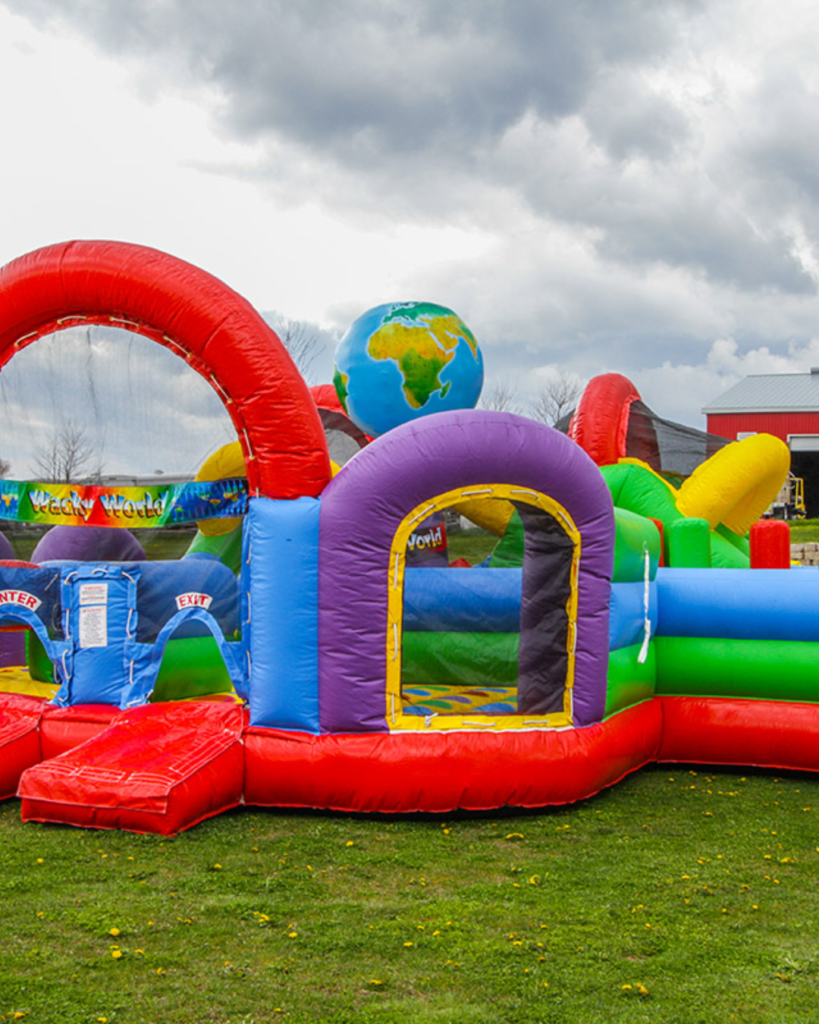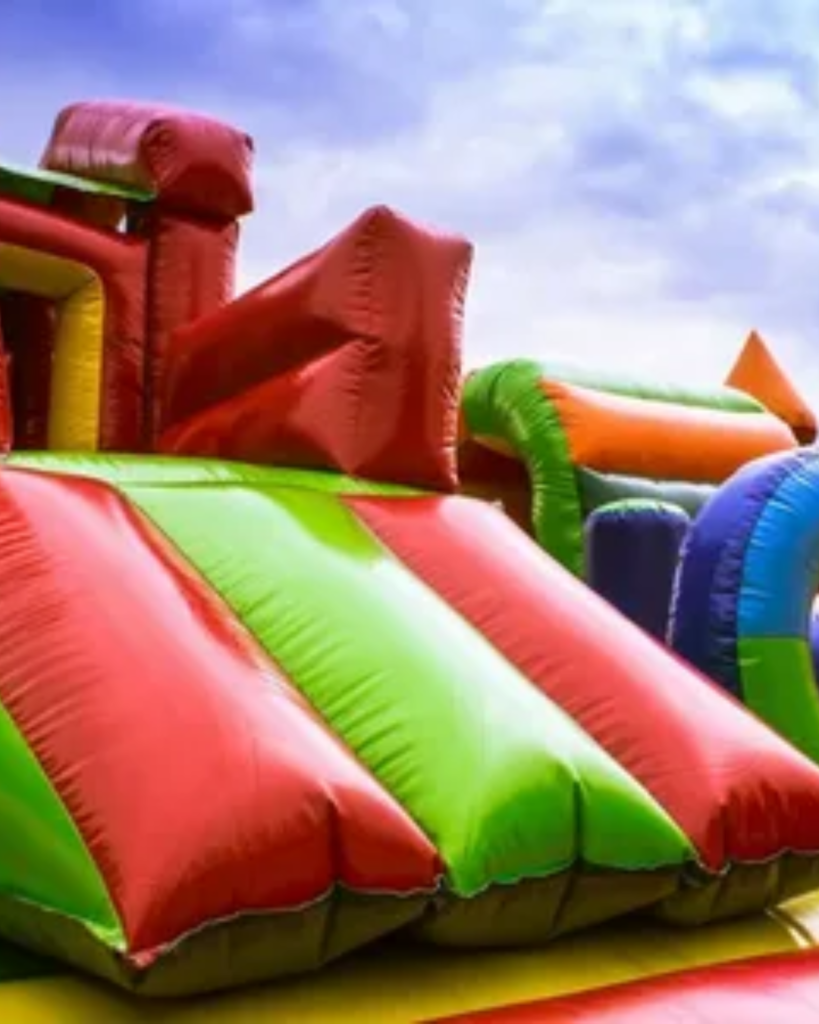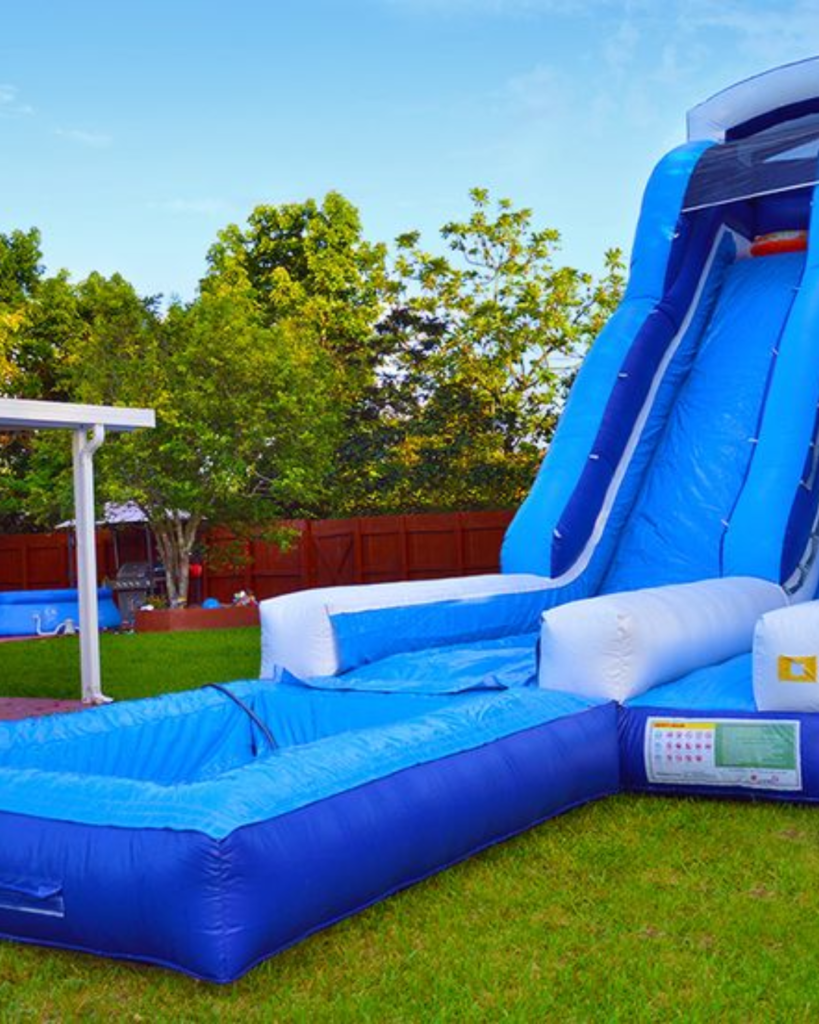
Inflatables have become a popular category of products utilized in various settings, including recreational, commercial, and industrial applications. Their versatility, portability, and ease of use make them a favored choice for numerous activities and events. Here’s a detailed look at inflatables, covering their types, materials, manufacturing processes, uses, and safety considerations.
We Are Providing Different Types of Inflatables
Recreational Inflatables:
- Bounce Houses: Often found at children’s parties, these large structures provide a safe space for kids to jump and play. They come in various themes and sizes, catering to different age groups.
- Water Slides: Popular during summer months, these inflatables can be set up in backyards or water parks. They often feature added elements like splash pools and climbing walls.
- Inflatable Pools: Easy to set up and dismantle, these pools are ideal for families looking for a temporary water solution. They range in size from small kiddie pools to larger models for family use.
Commercial Inflatables:
- Advertising Inflatables: Companies use large, eye-catching inflatables to attract attention to their brand. These can include inflatable arches, mascots, or even custom designs tailored to a specific event or promotion.
- Event Inflatables: For festivals, fairs, or promotional events, inflatables like obstacle courses, giant slides, and interactive games provide entertainment and draw crowds.
Industrial Inflatables:
- Inflatable Tents and Structures: Used in emergencies, military operations, or temporary housing, these inflatables can be rapidly deployed and provide shelter or workspace.
- Inflatable Blimps and Balloons: Often utilized for advertising purposes, these aerial inflatables can be seen hovering over events or businesses.
Materials Used
Inflatables are typically constructed from a variety of durable materials, each chosen for its specific properties:
- Vinyl: A common material for inflatables, vinyl is known for its durability and resistance to tearing. It can withstand outdoor conditions and is easy to clean.
- Polyester: Lightweight and often used in combination with PVC coatings, polyester inflatables are popular for both commercial and recreational uses due to their strength and flexibility.
- Nylon: This lightweight material is used in smaller inflatables. While it is not as durable as vinyl, nylon is easy to transport and store.
Manufacturing Processes
The production of inflatables involves several key steps:
Design: The design phase includes creating blueprints or digital models of the inflatable. This phase also considers safety features and the intended use of the product.
Material Cutting: Sheets of vinyl or other materials are cut into the required shapes and sizes. This is often done using specialized cutting machines for precision.
Seaming and Welding: The cut pieces are sewn or welded together using high-frequency welding machines. This process ensures airtight seals, critical for maintaining inflation.
Testing: Finished inflatables undergo rigorous testing to ensure they meet safety and quality standards. This may include checks for air leaks and structural integrity.
Packing and Shipping: Once tested, the inflatables are deflated, packed into boxes, and prepared for shipping. They often come with a pump and repair kit for convenience.
Uses of Inflatables
Inflatables serve various purposes across multiple industries:
Entertainment and Leisure: They are a staple at amusement parks, carnivals, and children’s parties, providing fun and physical activity.
Advertising: Businesses use inflatables to grab attention at trade shows, grand openings, or special promotions. Their visibility and novelty can enhance brand recognition.
Emergency Response: Inflatables can provide temporary shelter during disasters. Their quick deployment can be crucial in providing immediate relief to affected populations.
Sports and Fitness: Inflatable obstacle courses and arenas promote physical activity in a fun, engaging way. They are often used for team-building events and community challenges.
Safety Considerations
While inflatables are generally safe, certain precautions should be taken:
Supervision: Children should always be supervised while using inflatables. Adult oversight can help prevent injuries from rough play or overcrowding.
Proper Setup: Ensuring that inflatables are set up according to the manufacturer’s guidelines is crucial for safety. This includes anchoring the inflatables securely to prevent them from tipping over or being blown away by wind.
Weather Conditions: Inflatables should not be used in severe weather conditions, such as strong winds, heavy rain, or lightning, as these can increase the risk of accidents.
Regular Maintenance: Periodic inspections for tears, punctures, and general wear and tear can extend the life of inflatables and ensure they remain safe for use.









